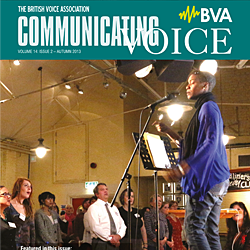About the Association
Archived book reviews
Working With Dysphagia
Marks and Rainbow
Speechmark Publishing, 2001
Review by: Annette Kelly, April 2002
In Working with Dysphagia, Lizzy Marks and Deirdre Rainbow have produced a practical, accessible manual that will be particularly useful to the therapist new to the field of dysphagia. Both authors have extensive experience in working with neurologically impaired patients and this is reflected in the content.
Throughout the text, there is an emphasis on practical aspects of dysphagia assessment and management, with the inclusion of charts, rating forms and specific tips for teaching management techniques. The specific assessment and management of ENT and head and neck dysphagia is excluded from the manual.
Normal swallowing in young and older groups is clearly and succinctly reviewed, encompassing anatomy, neuroanatomy, physiology and respiration. Simple anatomical line diagrams provide additional clarity although the usefulness of the diagrams would have been enhanced by reference and comparison to photographs of correlating normal anatomy.
The subjective and instrumental assessment of dysphagia is discussed with a review of the multiple factors that can modify the assessment approach. There is a helpful swallowing questionnaire to be administered to the patient and a critical review of pre-packaged assessments. The section on videofluoroscopy provides a comprehensive basic overview and practical guidance, with a "practical considerations" section that would be very useful for the inexperienced therapist. Unfortunately, the description of FEES is limited and does not adequately describe the indications or benefits of this technique. The authors erroneously state that the assessment is carried out by a Speech and Language Therapist and an ENT Surgeon, when in fact this procedure can be competently carried out by two speech and language therapists with one trained in nasendoscopy. This is particularly true in neurological settings where the services of ENT surgeons may be relatively unavailable. Comparison of the instrumental assessment techniques in terms of advantages and disadvantages and comparative indications for each technique would have been a useful extension of this section of the manual.
The topics of saliva control and oral hygiene are covered comprehensively and would be extremely useful to inexperienced and experienced therapists alike. Other management topics benefit from the inclusion of practical, useful tips, such as alteration of food temperature and provision of manageable portions to enhance oral intake. Through-out the manual there is a focus on multi-disciplinary team working and on normalising the eating and drinking experience as much as possible, preserving patient dignity and the right to make choices. Broader issues integral to the provision of a dysphagia service, such as health and safety considerations, legal issues and training other professionals are encompassed.
While the emphasis on practical management techniques is useful for the inexperienced therapist, the authors at times adopt a prescriptive approach to the indications and outcomes of the various techniques. There is a lack of emphasis on the importance of evaluating the effectiveness of these techniques with each dysphagic individual prior to implementation. Head flexion does not always widen the vallecular space (due to anatomical variation) and while the "ideal posture" is appropriate for most patients, it is not the most helpful posture for some dysphagic individuals. A cautionary note about the need for the assessment of the merits of these techniques with the individual patient would have been useful to guide less experienced therapists and dissuade them from adopting a "cookbook" approach to dysphagia management.
In summary, Working with Dysphagia is a practical, accessible manual that comprehensively covers the assessment and management of dysphagia of neurological origin. It would be a useful addition to the library of any speech and language therapy department involved in the management of patients with dysphagia and would be particularly useful to therapists with limited dysphagia experience.
More archived content online
Disclaimer
Neither the British Voice Association nor the Editor can be held responsible for errors or any consequences arising from the use of information contained in its newsletters (or extracts from its newsletters published online); the views and opinions expressed do not necessarily reflect those of the British Voice Association (BVA) or the Editor, neither does the publication of advertisements constitute any endorsement by the BVA or Editor of any products or services featured.

 Join us Now!
Join us Now! our newsletter
our newsletter free voice care leaflets & information – download here
free voice care leaflets & information – download here Help our work by donating while you shop
Help our work by donating while you shop